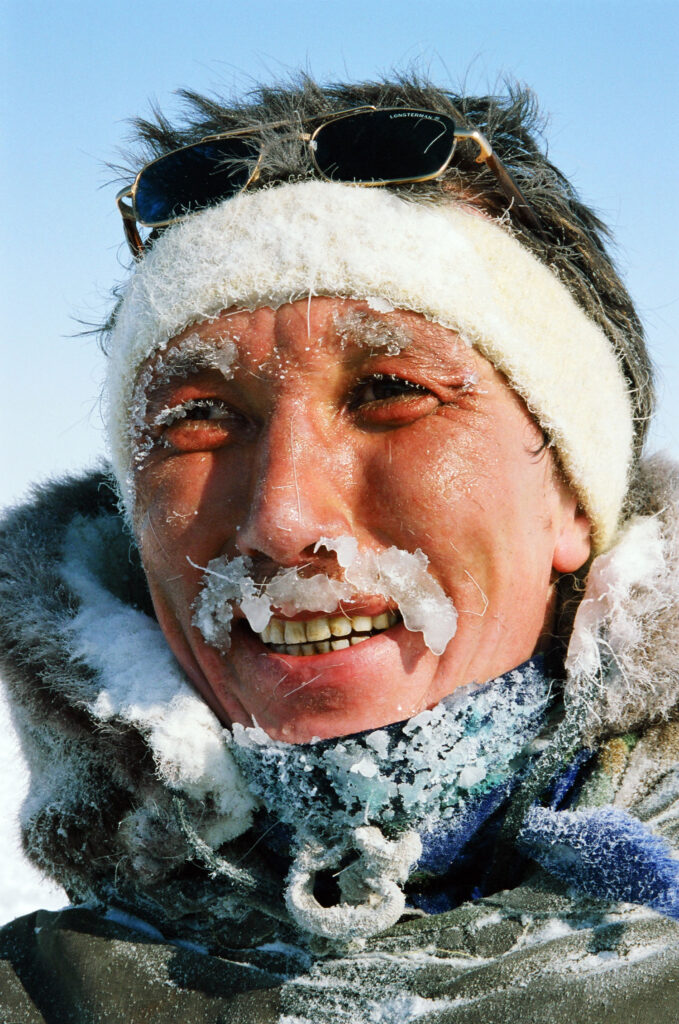The traditional nomadic dwelling of the Dolgans is a conical tent of the Tungus type, covered with rovduga covers (in summer) and reindeer skins (in winter). In the old days, the Dolgans also installed golomo and teppe of the Yakut type, but without windows and bunks (with the arrival of the Russians, they were ousted by houses on runners and mobile huts).
The mobile hut on the sledges had windows with glass, an iron stove, bunks, a table, sometimes chairs, was very convenient for travels and is still preserved in Dolgan life. Of the outbuildings, storage sheds and barns on high pillars are common.
http://www.youtube.com/embed/PsVef-RpIhY
Dolgan camp
The most original dwelling of the Dolgans is the hut, borrowed from the Russian old-timers of the North. It is a frame house made of rails mounted on runners.
The sleds of the living hut have from six to eight poppets, the upper ends of which are inserted into the holes of the flooring boards at a distance of 15-25 cm from the edge. They try to make the foundations of the walls grooved, slightly mobile, only occasionally using nails. Otherwise, when driving on an uneven surface of the tundra, the frame will skew and break.
In a light large hut without bunks, there are usually ten main vertical stands 4-6 cm thick. Four of them are inserted vertically into the slots of the flooring at the corners, two at an equal distance from the corners - in the longitudinal sides. Their upper ends are connected by two crossbars along the longitudinal sides and four transverse upper ceiling arches. Two vertical boards reinforce the end walls. Walls, window and door openings, and the ceiling are formed with additional posts and crossbars. In any frame, the corners are reinforced with oblique stops, often on nails. In case of distortions, they hold the slats, allowing them to remain slightly mobile. Glazed window frames are tightly inserted into the openings and secured with leather hinges. When the beam moves, they are freed so that the glass does not break.
When the construction of the base is completed, the frame is covered with chintz, satin or other, preferably cotton fabric (with the front side inward). On top of the fabric, a cover is first put on, sewn from tanned skins of a winter deer, with the fur outside, and then a cover made of light linen fabric. The covering is nailed from the outside with a thin plank to the edges of the boards so that the edge is 5-10 cm below the floor, remaining free.
Outside, in place of the door and windows, the cover is cut. The door flap is reinforced with additional boards, and the window flap is raised up and propped up from the outside with a pole.

Everything in the bulk is carefully thought out. In the right corner of the door is a kuchigar, a box for firewood, lined with tin on the inside. Nearby, on stands, is a small iron stove. Its pipe is led out through a socket in the ceiling and rises half a meter above the roof. There is also an outlet, hot air comes out of here. It is stuffed with a bag of reindeer hair. Behind and near the stove, on the shelves, are kitchen items. A washbasin is also hung here, a table and seats by the window.
Opposite the kitchen half, there is a sleeping compartment, right there a cradle for a child. But in a large beam, sleeping places can also be located on the side of the stove. They sleep both on featherbeds and on thick deer skins. During the day, the bed is rolled up against the wall or completely taken out of the beam into the air, leaving only the skins for the seat.
A block of coal smoldering in the oven helps to keep warm overnight. Crossbars are built over the stove - clothes are quickly dried here.
The reindeer herders quickly realized the advantages of the hut. It is not just warm and cozy here, housing is also mobile, compact, it does not need to be disassembled and reassembled like a tepee, roaming with the herd. Already at the beginning of the last century, the indigenous population of Taimyr adapted the huts to the conditions of their life. But now its dimensions have increased, the structures of attachment to the sled have changed.
Residential huts were also ordered from Russian craftsmen.
 Сегодня балок – основное зимнее жилище оленеводов тундры и лесотундры Таймыра. Он постепенно входит в быт оленеводов и далеко за пределами Таймыра. Появляются передвижные балки, разнообразные по внешнему виду и размерам, конструкции и назначению.
Сегодня балок – основное зимнее жилище оленеводов тундры и лесотундры Таймыра. Он постепенно входит в быт оленеводов и далеко за пределами Таймыра. Появляются передвижные балки, разнообразные по внешнему виду и размерам, конструкции и назначению.
Hunting huts - they are transported on deer, dogs, and sometimes with the help of motosledges. The hunter used one domestic deer to move hunting hut on the runners and went to the taiga for a week to check the traps.
There are huts up to 9 meters long, more than 2.5 meters wide, and up to 2 meters high. Reindeer herders make them themselves or order them from recognized craftsmen.
Small huts were adapted for storing and transporting clothes and utensils. Heavy - replaced stationary housing for fishermen.
To protect the entrance to the beams from snow drifts, sometimes they make additional frame canopy covered with tarpaulin. The mobile canopy attachments are especially convenient.
When migrating, some of the things are taken out of it and placed on sledges, and 4-10 reindeer freely transport it to a new place. In the summer, when the family moves to the teppee, the fur covers from the hut turn into the covering of the stationary dwelling. The stove is also transferred to the hut by increasing the pipe. The uncovered hut is left at the last winter camp (winter road) along with sledges, on which winter clothes are folded.
A kerosene lamp illuminates the hut on the long polar night. Household buildings were barns or storage sheds, which were installed on high pillars.


